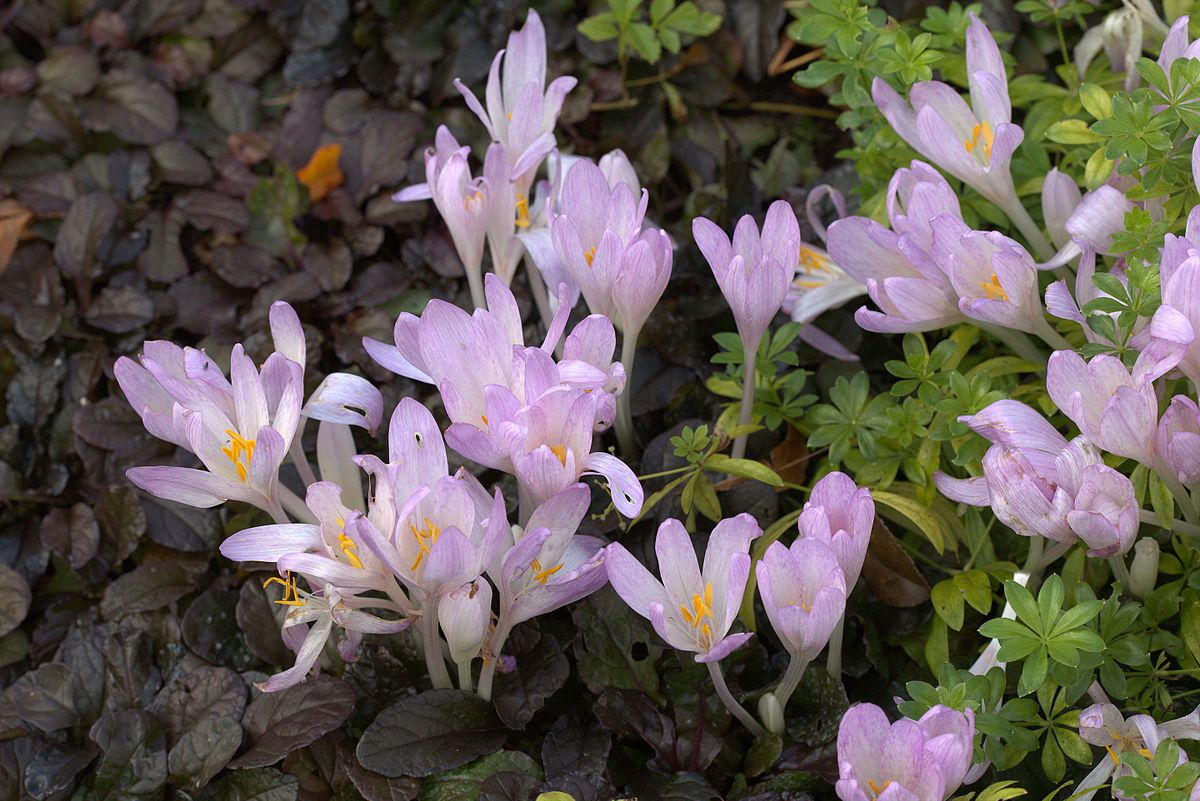Davis's autumn crocus
(Colchicum davisii)

Description
Colchicum davisii is a species of flowering plant in the family Colchicaceae, native to Turkey. It is a herbaceous perennial that produces large, showy flowers in the autumn. This plant is commonly known as Davis's autumn crocus, and is widely cultivated as an ornamental plant in gardens and parks. In this article, we will discuss the characteristics of Colchicum davisii, its growth requirements, and its uses in horticulture. Taxonomy and Nomenclature Colchicum davisii was first described by William Thomas Stearn and Graham Stuart Thomas in 1981, and named in honor of Peter Hadland Davis, a British botanist who specialized in bulbs. The species name "davisii" is an eponym, reflecting the fact that it was named after a person. Description Colchicum davisii is a bulbous perennial plant that grows to a height of 10-15 cm. It has a corm that is about 2-3 cm in diameter, which is covered with a brownish membrane. The leaves of the plant are lance-shaped, and grow up to 20 cm long and 2 cm wide. They emerge in the spring and die back in the summer. The flowers of Colchicum davisii are large and showy, and appear in the autumn, after the leaves have died back. The flowers are deep pink to magenta in color, and are about 6-8 cm in diameter. Each flower has six petals, which are long and narrow, and are arranged in a star shape. The flowers are held on sturdy stems, which are about 15-20 cm tall. Distribution and Habitat Colchicum davisii is native to Turkey, where it grows in rocky, mountainous areas at altitudes of 1000-2000 m. It prefers well-drained soils that are rich in organic matter. The plant is adapted to the Mediterranean climate of its native range, which is characterized by hot, dry summers and cool, wet winters. Cultivation Colchicum davisii is a popular ornamental plant, and is widely cultivated in gardens and parks. It is easy to grow, and requires minimal maintenance. The plant prefers full sun to partial shade, and well-drained soils that are rich in organic matter. It is tolerant of a wide range of soil pH values, but prefers slightly acidic soils. The plant should be watered regularly during the growing season, but allowed to dry out during the summer dormancy period. Propagation Colchicum davisii is propagated by dividing the corms in the autumn, after the leaves have died back. The corms should be lifted carefully from the soil, and separated into smaller sections. Each section should have a healthy shoot and a portion of the root system. The sections can then be planted in a new location, at a depth of about 10 cm. Uses Colchicum davisii is primarily grown as an ornamental plant, and is prized for its large, showy flowers. The plant is often used in mixed borders, rock gardens, and woodland gardens. It can also be grown in containers, and used to decorate patios and balconies. The plant is not edible, and should not be ingested, as it contains colchicine, a toxic alkaloid that can cause severe gastrointestinal symptoms. Conclusion Colchicum davisii is a beautiful and easy-to-grow plant that is widely cultivated for its large, showy flowers. It is native to Turkey, where it grows in rocky, mountainous areas at high altitudes. The plant is adaptable to a wide range of growing conditions, and is a popular choice for gardens and parks.
Taxonomic tree:







